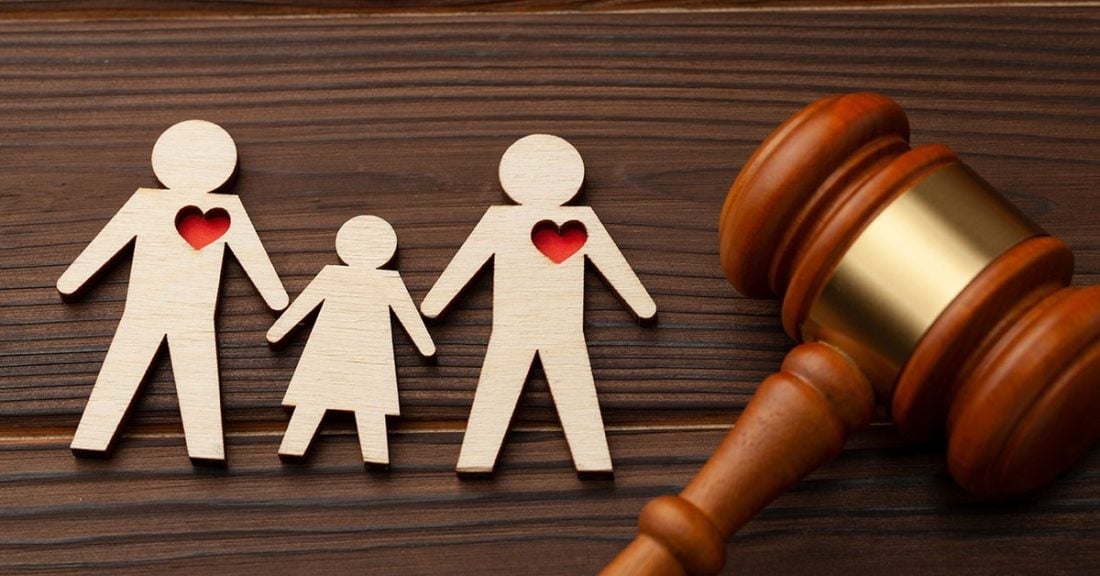Adoptions From Foster Care

Every child needs a family. For foster children and youth who cannot return to their birth families, having a permanent, loving adoptive family is critically important. The KIDS COUNT Data Center provides the latest statistics about this vulnerable population.
Stats on Kids Waiting to Be Adopted
In 2023, more than85,000 children were waiting in foster care for adoption in the United States, down from over 109,000 in 2022. The share of kids waiting 5 years or more to be adopted was 15% in 2023, up from 12% the previous year. In 2023, about one-third (34%) of kids had been waiting 1 to 2 years and, unfortunately, half had been waiting 2 to 4 years.
Additional statistics on children awaiting adoption in 2021 2023:
- One-fourth (25%) lived in two states: California and Florida. (Texas typically has the second-highest figure in the country, but data were not available for that state in 2023.)
- About 40% of these children were ages 1 to 5, the largest share, and 3% were infants, similar to previous years. Kids ages 6 to 10 and 11 to 15 each comprised about a quarter, and older youth 16 to 20 represented nearly one in every 10 kids.
- Trends by race and ethnicity also have been fairly steady in recent years, with white children making up 44% of this group, Latino and Black children each comprising about one-fifth (21% and 22%, respectively), followed by multiracial kids (9%), American Indian or Alaska Native children (2%) and Asian American and Native Hawaiian kids (1%).
At the national level, Black and American Indian or Alaska Native children continue to be overrepresented among children awaiting adoption — and children in foster care, generally — compared to their share of the total child population.
Stats on Kids in Child Welfare Who Get Adopted
Adoptions from foster care have increased over the last two decades in the United States. In 2021, one in four (25%) children who left foster care were adopted by a family, up from 17% in 2000. Data from 2022 and 2023 are not comparable to prior years due to methodology changes but, encouragingly, the latest data show that this figure is holding at 27%.
However, the share of kids leaving foster care to live with families overall, adopted or not, declined in the past two decades. That is, the percentage of children who exited foster care to live with a family — whether an adoptive family, living with a relative or through reunification with a parent/primary caregiver — decreased from 84% in 2000 to 78% in 2021. In 2022 and 2023, this figure held steady at 79%.
In a broader measure* of adoptions, just over 54,200 children and youth in the child welfare system were adopted in 2021 (the latest data on the KIDS COUNT Data Center), a considerable decrease from about 66,100 in 2019 but still above figures around 50,000 a decade earlier.
Other findings about children who were adopted from the child welfare system:
- In patterns that have been relatively stable for more than a decade, the majority (54% in 2021) of these adoptees are from birth to age 5, just over one-forth are ages 6 to 10, 16% are ages 11 to 15 and 4% are older youth ages 16 to 20.
- Over the last two decades, white kids have comprised a growing share of adopted children — from 38% in 2000 to 50% in 2021 — while the share for Black children has decreased from 38% to 17%. Percentages for Latino kids also grew from 15% to 20% in this time period, as did shares for multiracial kids (2% to 9%) and American Indian or Alaska Native children (1% to 2%). The share for Asian American and Native Hawaiian kids remained stable at 1%.
- In 2021, close to two-thirds (64%) of these adoptions were by the foster parents (either relatives or non-relatives) who cared for the children while they were in foster care, a 10 percentage point increase from 54% in 2000. Another heartening trend: The share of kids adopted by relatives nearly doubled from 18% to 32% between 2000 and 2021.
Adoption Statistics in the KIDS COUNT Data Center, Including Data by State and Territory
- Children in foster care waiting for adoption
- Children exiting foster care for adoptions and other reasons
- Children in the child welfare system who have been adopted
More Data and Resources on Adoptions and Foster Care
See all regularly updated statistics on adoptions, foster care and more in the KIDS COUNT Data Center, and explore the Foundation’s many publications, blog posts, webinars and other resources related to child welfare and adoptions, including:
- Blog post: Child Welfare and Foster Care Statistics
- Blog post: What Is Permanence?
- Blog post: Helping Mental Health Clinicians Better Support Adoptive Families
- Report: Keeping Kids in Families: Trends in U.S. Foster Care Placement
Also see Casey Family Programs’ resources on adoption.
* Note: Children in the child welfare system who were adopted includes the following broader group of adoptions, including children who may not be in foster care:
- Children placed for adoption by a public child welfare agency;
- Children who have been in the public foster care system and were placed for adoption by a private agency under contract with the public child welfare agency; and
- Children in whose adoption the public child welfare agency was involved but who had not been in the public foster care system (e.g., children who received Title IV‑E funds for nonrecurring costs of adoption).






